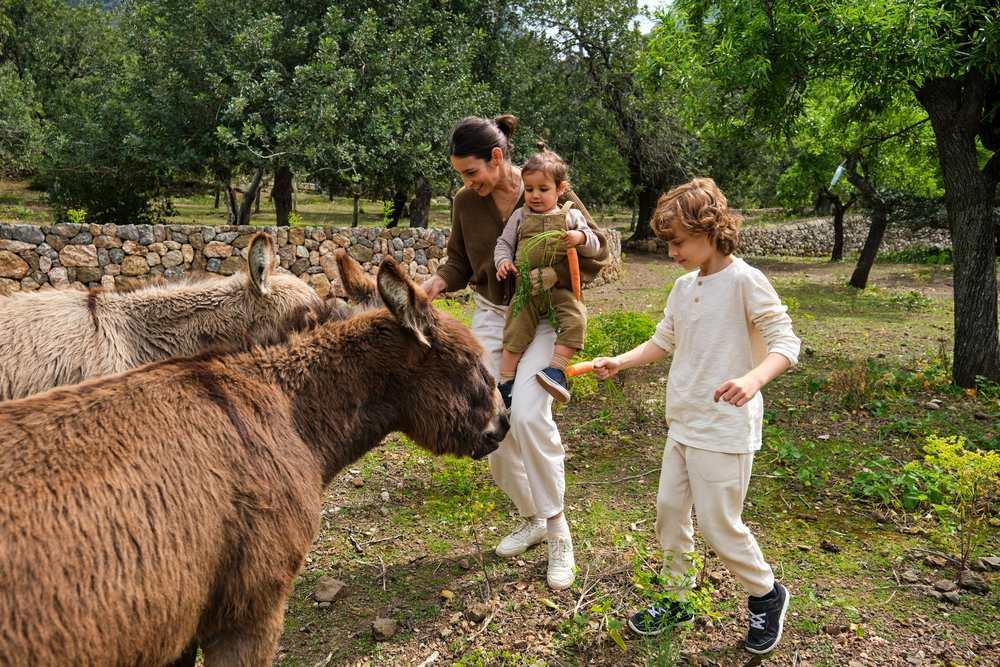In a world increasingly defined by urban landscapes and human-centered priorities, the quiet yet impactful presence of animal sanctuaries often goes unnoticed. These havens serve not only as refuge for animals rescued from neglect and abuse but also as vital educational and advocacy platforms fostering awareness about animal welfare. As society grapples with profound questions of ethics and responsibility toward our fellow creatures, the role of these sanctuaries becomes ever more crucial. They stand at the intersection of compassion and action, illustrating what is possible when humans take a step back to prioritize the needs of voiceless beings. In this exploration, we delve into the multifaceted contributions of animal sanctuaries today, examining their significance in preservation, education, and the broader movement for humane treatment of animals in an ever-evolving world.
Table of Contents
- Understanding the Importance of Animal Sanctuaries in Modern Society
- The Impact of Animal Sanctuaries on Conservation Efforts and Biodiversity
- Challenges Faced by Animal Sanctuaries and Strategies for Sustainability
- How Communities Can Support and Engage with Local Animal Sanctuaries
- In Retrospect
Understanding the Importance of Animal Sanctuaries in Modern Society

Animal sanctuaries serve as critical havens for many species that have suffered due to human actions, such as habitat destruction, poaching, and neglect. These facilities provide a safe environment where animals can experience rehabilitation, enjoy natural living conditions, and live out their lives free from the threats they faced in the wild or captivity. The dedication of sanctuary staff and volunteers not only ensures the well-being of the animals but also raises awareness about wildlife conservation issues, fostering a sense of responsibility among the public. By highlighting the plight of these animals, sanctuaries breed compassion, encouraging visitors to rethink their relationship with the natural world and consider their role in advocating for animal rights.
Moreover, the educational aspect of animal sanctuaries cannot be overlooked. Through guided tours, workshops, and outreach programs, sanctuaries play a vital role in informing the community about the challenges facing various species and the importance of biodiversity. They provide a unique opportunity for hands-on learning and personal connection with animals that are often faceless in broader conservation discussions. By engaging with visitors on multiple levels, sanctuaries inspire action and support for conservation efforts. Here are some vital educational benefits:
| Key Educational Benefits | Description |
|---|---|
| Increased Awareness | Educates the public about endangered species and conservation needs. |
| Hands-on Experience | Allows visitors to interact with animals in a respectful environment. |
| Community Involvement | Encourages local engagement through volunteer opportunities. |
The Impact of Animal Sanctuaries on Conservation Efforts and Biodiversity

Animal sanctuaries serve as crucial lifelines for numerous species whose habitats are under siege from human activity and environmental changes. These havens provide a refuge for injured, abandoned, or exploited animals, allowing them to recover and thrive in a supportive environment. By promoting education and awareness, sanctuaries actively engage the public, inspiring communities to appreciate wildlife and the urgency of conservation. This grassroots outreach fosters a deeper understanding of biodiversity, illustrating how each species plays a vital role in maintaining ecological balance.
Moreover, sanctuaries contribute to conservation efforts by acting as living repositories of genetic diversity. They often participate in breeding programs for endangered species, ensuring that genetic variation is preserved for future generations. By collaborating with other conservation organizations, sanctuaries not only assist in rehabilitation but also take part in habitat restoration and reintroduction initiatives. This symbiotic relationship enhances global efforts toward biodiversity conservation. A snapshot of the contributions can be summarized in the table below:
| Contribution Area | Impact |
|---|---|
| Wildlife Rehabilitation | Restoration of individual animals back to health |
| Education Programs | Increased community awareness and engagement |
| Conservation Breeding | Maintaining genetic diversity for endangered species |
| Habitat Restoration | Improving ecosystems to support wildlife |
Challenges Faced by Animal Sanctuaries and Strategies for Sustainability
The journey of animal sanctuaries is fraught with numerous challenges that often threaten their existence and effectiveness. Funding is one of the most significant obstacles, as many sanctuaries rely on donations and grants that can fluctuate dramatically. Additionally, the logistics of caring for a variety of species can be overwhelming, from maintaining proper facilities to ensuring the availability of specialized veterinary care. Sanctuaries often grapple with staff shortages and volunteer burnout, which can lead to inconsistent care and diminished ability to meet the needs of their inhabitants. Regulatory barriers add another layer of complexity, as sanctuaries must navigate a patchwork of laws and regulations that can vary widely by location.
To address these challenges, many sanctuaries are adopting innovative strategies aimed at fostering resilience and sustainability. One effective approach includes establishing community partnerships that not only provide financial support but also encourage local engagement through volunteer programs and educational initiatives. Additionally, sanctuaries are increasingly leveraging social media to raise awareness and funds, creating compelling narratives that resonate with potential donors. Investment in sustainable practices, such as eco-friendly building materials and renewable energy sources, can help lower operational costs in the long run. By diversifying income streams—through merchandise sales, animal adoptions, and educational workshops—sanctuaries can create a more stable financial base, ensuring they continue their vital work in animal welfare.
How Communities Can Support and Engage with Local Animal Sanctuaries
Local animal sanctuaries thrive on community involvement, and there are numerous ways for residents to contribute to these vital establishments. Volunteering your time is one of the most rewarding methods—individuals can help with animal care, grounds maintenance, or special events. Hosting fundraisers or including sanctuaries in community events can also raise much-needed funds and awareness. Additionally, donating supplies such as food, bedding, or cleaning products can significantly alleviate the daily operating costs of these sanctuaries, allowing them to focus resources on the animals in their care.
Community support fosters a stronger connection between sanctuaries and local residents, enhancing the educational component of these organizations. Workshops and outreach programs can be organized to inform the public about animal welfare, conservation, and responsible pet ownership. Furthermore, collaborating with schools to incorporate educational trips can engage the younger generation in animal care and empathy. By creating a vibrant network of support, communities not only help sustain their local sanctuaries but also contribute to a culture that values empathy and respect for all living beings.
In Retrospect
As we draw the curtain on our exploration of the vital role that animal sanctuaries play in today’s world, it’s clear that these havens are much more than mere refuges for animals in need—they are essential ecosystems of empathy, education, and rehabilitation. Each sanctuary emerges as a testament to the resilience of both animals and the dedicated individuals who care for them. They serve not only as safe shelters but also as catalysts for change, inspiring communities to reflect on their relationship with nature and their responsibilities towards other living beings.
In a time when environmental challenges loom large and the narrative around conservation grows increasingly urgent, the importance of sanctuaries is amplified. They foster a profound understanding of the complexities surrounding animal welfare and ecological balance, providing a poignant reminder of the interconnectedness of all life. As we venture forward, let us carry with us the lessons learned from these sanctuaries, advocating for kindness, compassion, and a deeper respect for the animals that share our planet.
In examining their role today, we must also look toward the future, hoping to support these vital organizations and promote a world where every creature—regardless of its plight—can find solace, safety, and a voice. The journey doesn’t end here; rather, it begins anew with each of us, inviting us to be stewards of life and guardians of the voiceless. Together, we can create a ripple of positive change that extends beyond the sanctuary gates, enriching not only the lives of animals but our own as well.



